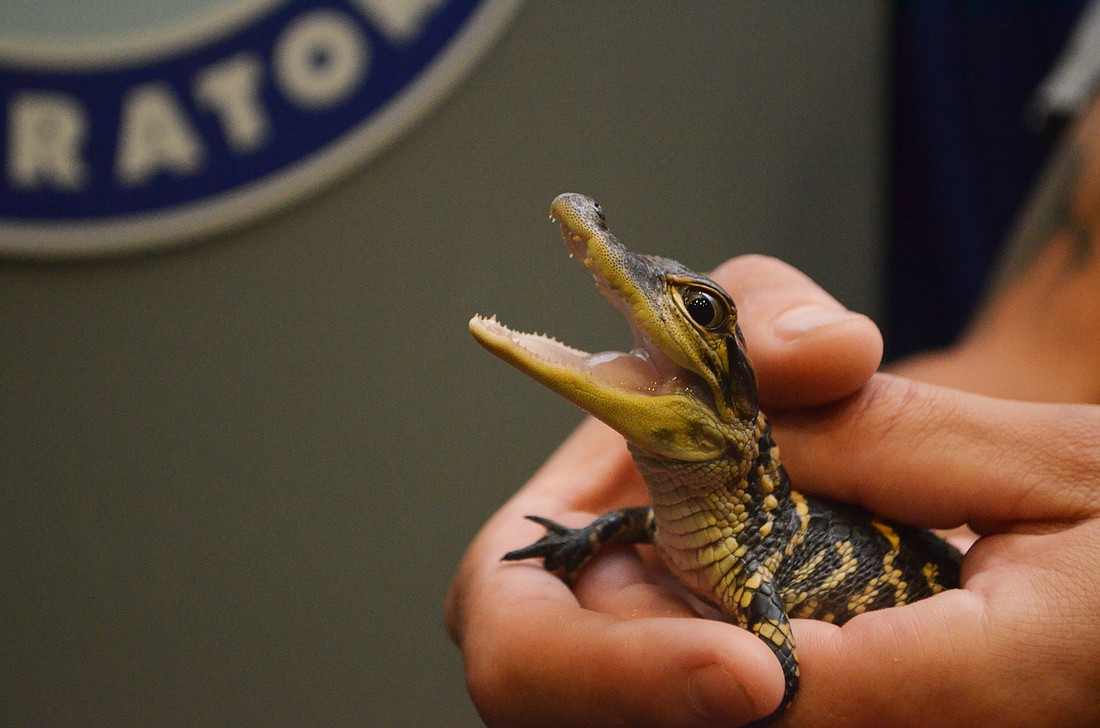- December 18, 2025
-
-
Loading

Loading

One of the state’s approximately 1.3 million alligators will be lucky enough to call the Mote Marine Laboratory and Aquarium home.
An exhibit, “The Teeth Beneath: The Wild World of Gators, Crocs and Caimans,” will bring one American bull male gator and three female caimans to live a life of relative luxury at Mote.
Caimans are similar to crocodiles but smaller — their maximum size is 5 feet long.
The exhibit aims to educate Mote visitors on how wetland and coastal habitats are vital to native species.
The pedigree of the gator coming to Mote is unknown, and could well be a nuisance animal that was captured, said Evan Barniskis, assistant vice president of Mote Aquarium.
“It will basically continue our rescue theme where we take in animals that wouldn’t have a chance otherwise,” Barniskis said. “We’ll be providing a great home for them here at Mote Marine Laboratory and Aquarium.”
The exhibit, which will be located in the Ann and Alfred E. Goldstein Marine Mammal Research and Rehabilitation Center of Mote, will allow visitors to see the animals in their natural habitat from an underwater viewing area and from above.
“The one side will be the native American alligator with native planting and native fish and everything,” Barniskis said. “The other side is going to be the invasive caiman, and that’s an established invasive animal that’s found in Miami-Dade County, and we’ll also have some invasive fish in that side. So, we’ll be able to talk about what natural Florida should look like and then what happens when animals become established invasives, and how that can change the environment.”
Like the “Otters & Their Waters” exhibit, the gator exhibit will show visitors the importance of watersheds, as well as explain why the conservation of the species is important.
Barniskis said gators truly are a conservation success story. Once hunted to near extinction in the 1950s and 1960s, the American alligator gained protection in 1967 under the Endangered Species Act. Two decades later, the American alligator population rebounded and was delisted.
“It’s really important we educate our visitors about the need to conserve and protect the watershed environments and the important animals that live there, like the American alligator that will be on display,” Barniskis said.
Senior biologist Brian Siegel said he’s waited nine years for this exhibit to come to life.
Siegel said the gators, as icons of Florida, will be showcased in a positive light with a strong storyline. He will train and work with the animals to be conditioned to accept human care. It’s important, he said, because Mote staff will be doing medical exams and drawing blood.
“It’s amazing how many animals you can train, and I’m looking forward to working with new animals,” Siegel said. “We’ve got a fantastic staff here to help me out because it’s also new for myself.”
Alligators have never been on display at Mote, so not only are they new to the staff, but they’re also new to visitors, too.
“I think that’s one of the most exciting things about this exhibit,” he said. “We’re able to bring in a new-to-Mote animal. We’ve never had these on display here before, so we’re excited about our abilities to work with them, and we’re super excited to share that with our visitors,” Barniskis said.
The exhibit opens Feb. 25.